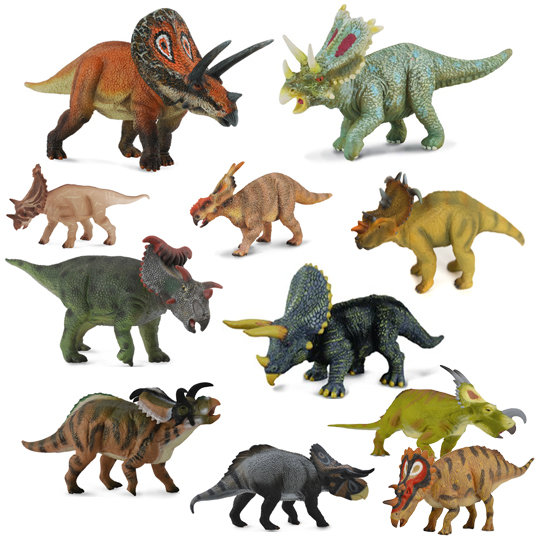Review of “New Perspectives on Horned Dinosaurs”
New Perspectives”, or to give the book its full title – “New Perspectives on Horned Dinosaurs – The Royal Tyrrell Museum Ceratopsian Symposium” is a comprehensive review of virtually all the recently published papers and journal articles on the ceratopsians. It is everything and anything to do with that great family of ornithischian dinosaurs, the horned dinos, from Psittacosaurus to the enormous Triceratops.
Horned Dinosaurs
Over the last three years or so, there have been a number of spectacular new discoveries and a lot of exciting research carried out on the ceratopsians and this volume, sets out to update readers on the latest interpretation of their fossil record. The book is split into thirty-six chapters and it is edited by Dr Michael J. Ryan of the Cleveland Museum of Natural History, Dr Brenda J. Chinnery-Allgeier of the University of Texas and Dr David Eberth of the Royal Tyrrell Museum (Alberta, Canada).
The list of contributors reads like a “who’s who” of modern palaeontology with contributions from the likes of esteemed scientists such as Phil Currie, Peter Dodson, Scott Sampson and Peter Larson. More than five hundred pages dedicated to all things ceratopsian, including descriptions of ten new types, which have recently been discovered.
Models of Horned Dinosaurs Highlighting Ceratopid Diversity
The picture (above) shows a huge variety of horned dinosaurs, all of which are represented in the CollectA model range: CollectA Age of Dinosaurs Popular Range.
Although, the book focuses mainly on North American discoveries there are some fascinating chapters dedicated to horned dinosaurs from farther afield. For example, there is a chapter dedicated to the research on Archaeoceratops (China), as well as a new look at Psittacosaurus and a paper on insect trace fossils associated with the rotting remains of Protoceratops.
This really is a comprehensive guide and ideal for the undergraduate student, or enthusiastic amateur. The book is very technical and is therefore not suitable for children.







Leave A Comment